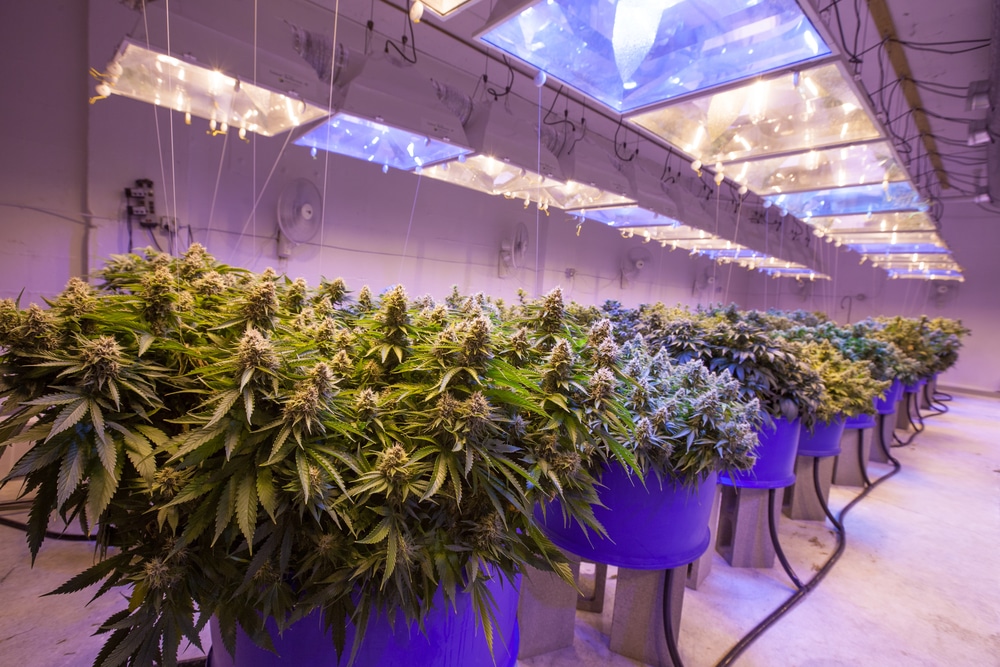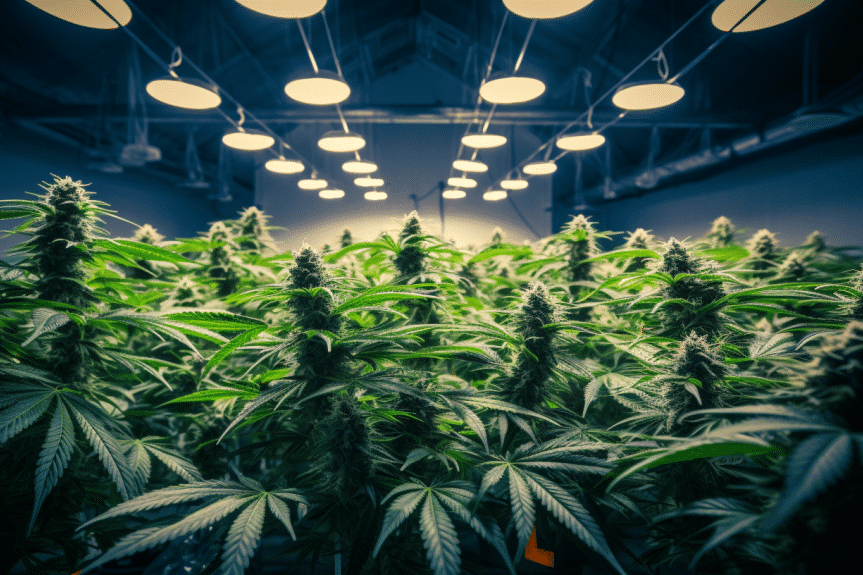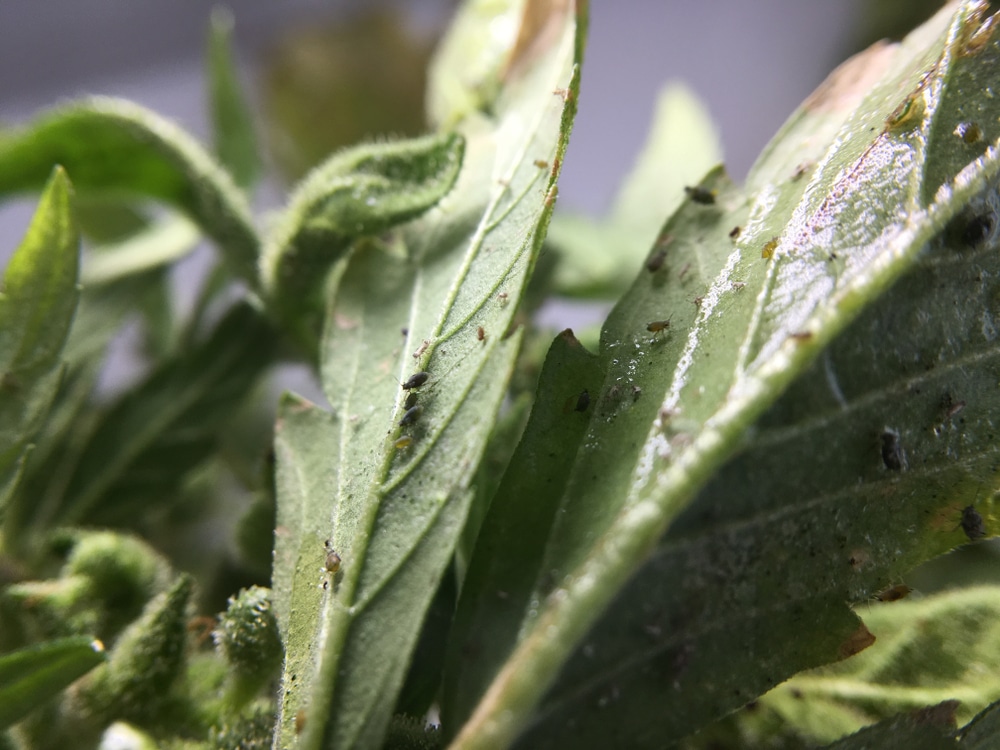No products in the cart.
Marijuana Education
Can a Female Plant Produce Seeds Without a Male
Ever wondered if your female marijuana plants could produce seeds without a male counterpart? Picture this: you’re caring for your female plants expecting to get some dense buds, and suddenly, seeds appear out of nowhere. No males in sight. It’s a puzzling phenomenon known as parthenogenesis, and there’s science behind the magic.
We’ll explore how female cannabis plants can produce seeds without fertilization, what triggers it, and what this rare phenomenon means for you as a grower.
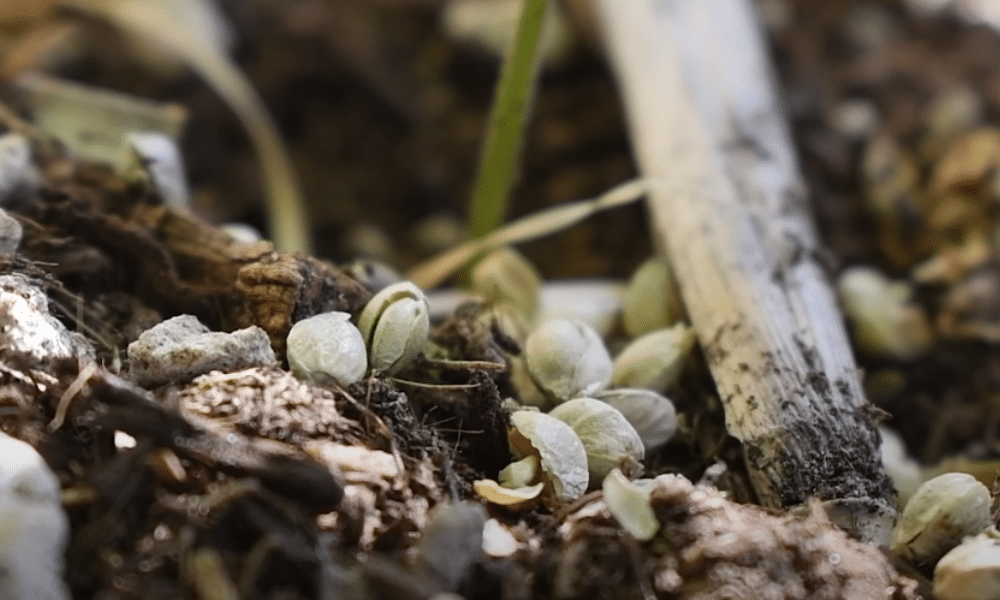
Key takeaways
- Parthenogenesis is a process where a female marijuana plant produces seeds without fertilization from a male plant.
- Factors that can trigger parthenogenesis include extreme temperatures, light cycle interruptions, and lack of pollination.
- Parthenogenesis has potential for creating consistent strains with desirable traits, but it may also increase the risk of producing hermaphroditic plants that are more likely to self-pollinate and produce lower-quality buds.
- Careful consideration is needed when relying solely on parthenogenesis for seed production.
This is how female plants can produce seeds without males
Can a female marijuana plant magically produce seeds without the help of a male? Well, let’s dive into the fascinating world of parthenogenesis in cannabis plants. parthenogenesis is when a female plant can make seeds all by herself, without needing any help from a male plant. It’s like the plant version of a single parent having a baby. This process can occur in many living organisms, but it doesn’t happen in people.
Parthenogenesis is a process where an egg cell develops into an embryo without being fertilized. In marijuana plants, parthenogenesis can occur naturally or induced through stress.
When a female cannabis plant undergoes stress due to extreme temperatures or physical damage, it may trigger the production of hormones that lead to parthenogenesis. This process leads to the development of seeds without pollination from a male plant.
It’s important to note these seeds are typically not stable and may produce weak offspring with genetic abnormalities. As a result, it’s still recommended to use male pollen for consistent and healthy seed production.
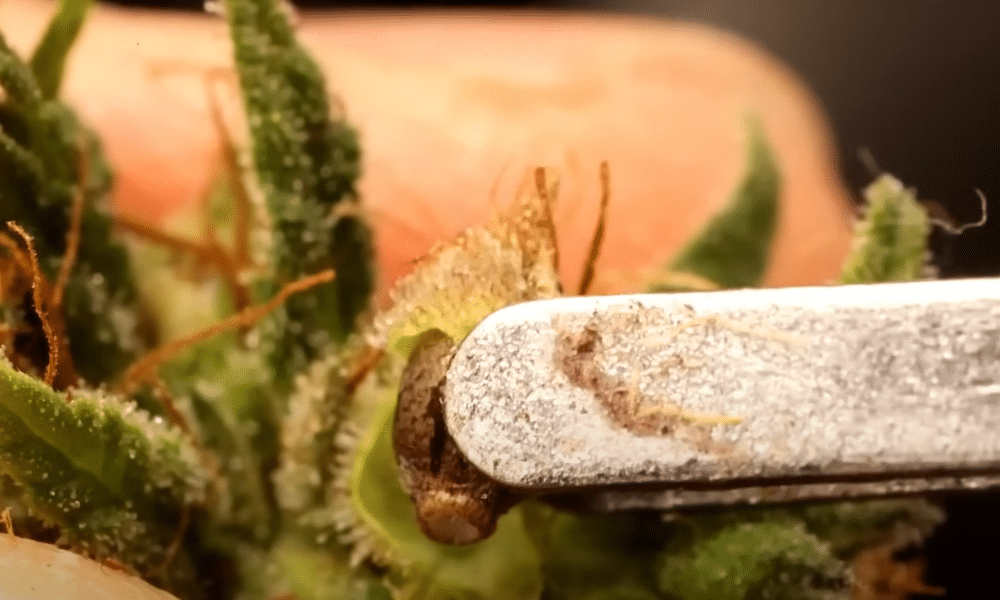
Why parthenogenesis is so important and what does this process mean for feminized seeds production?
The discovery of parthenogenesis in marijuana plants revolutionized the entire cannabis industry. With the ability to induce this process, breeders can create feminized seeds that growers adore. Before this breakthrough, growers had to rely on regular seeds, which had a 50/50 chance of producing males or females. However, with producing feminized seeds, the odds are overwhelmingly in favor of females, as they carry only XX chromosomes. By triggering parthenogenesis in female plants and spraying them with colloidal silver or aspirin, growers can ensure that all resulting seeds will develop into female plants, eliminating the risk of male plants in the crop. This method has become widely used in cannabis cultivation to produce feminized seeds, prized for their consistency and reliability in yielding high-quality buds.
Factors that trigger parthenogenesis
Here are three factors that can trigger parthenogenesis in marijuana plants:
- Extreme temperatures: Exposure to extreme heat or cold can cause stress on the plant, leading to the production of seeds without fertilization.
- Light cycle interruptions: Disrupting the light cycle during the flowering stage can induce stress on female marijuana plants, resulting in seed production.
- Lack of pollination: If there are no available male cannabis plants around, females may resort to producing their own seeds through parthenogenesis as a survival mechanism.
It’s important to note that while these conditions may trigger parthenogenesis in some cases, it’s not always guaranteed to result in successful seed production.
Any resulting seeds will be genetically identical to the mother plant and may not have desirable traits that come with sexual reproduction between different strains of cannabis plants.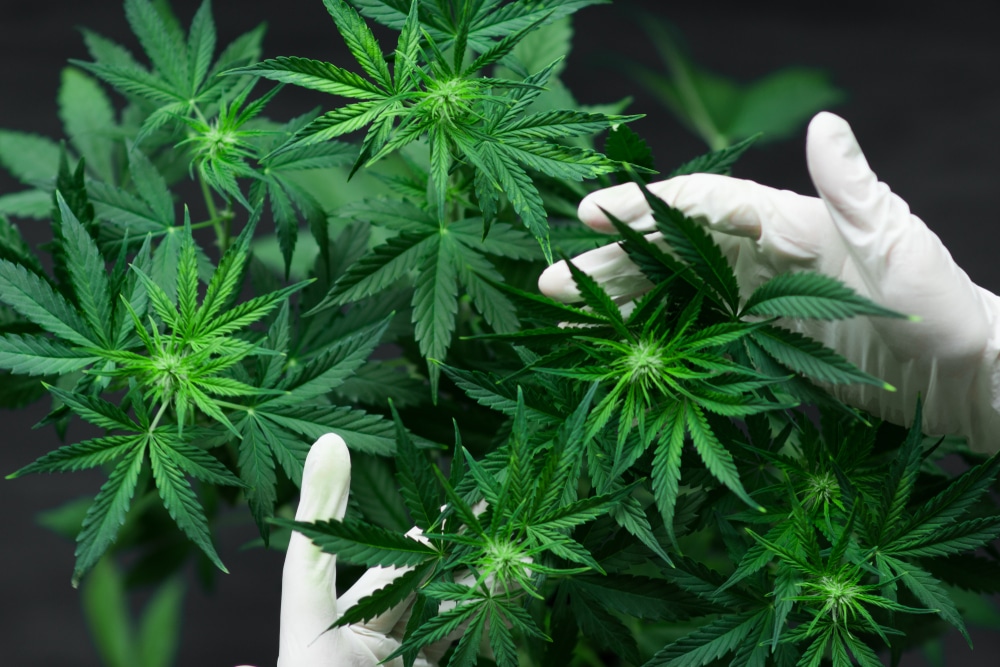
The process of seed production without fertilization
Are marijuana seeds worth anything? They are. Get ready to witness the miraculous phenomenon of parthenogenesis in cannabis, where offspring are produced without any contribution from a male counterpart.
Apomixis is a process that occurs when female plants produce seeds that are genetically identical to the mother plant. Parthenogenesis is a type of apomixis.
It’s important to note that not all female plants are capable of producing seeds through this method, as it requires certain environmental conditions and genetic factors.
Apomixis starts with the development of a reproductive structure called an ovule, which contains an egg cell. In normal sexual reproduction, pollen from a male plant fertilizes the egg cell, resulting in a new seed with genetic material from both parents.
In parthenogenesis, the egg cell undergoes mitosis (cell division) to create an embryo without fertilization. The embryo then develops into a seed that’s genetically identical to the mother plant.
This table provides more details on the differences between sexual and apomictic reproduction:
| Sexual Reproduction | Apomictic Reproduction | |
| Genetic Diversity | High (combination of genes from two parents) | Low (offspring are genetically identical to mother) |
| Number of Seeds Produced | Varies depending on pollination success | Consistent number produced through apomixis |
| Environmental Dependence | Requires compatible male and female plants and pollinators | Can occur without any external input |
While parthenogenesis may seem like a rare occurrence in cannabis, it has potential for use in creating consistent strains with desirable traits. Understanding this process can help growers optimize their cultivation practices for maximum yield and quality.
Limitations and risks of parthenogenesis
As a cannabis grower, it’s crucial to understand the drawbacks and potential hazards of depending solely on parthenogenesis for seed production.
While female marijuana plants can indeed generate seeds without males, this method isn’t foolproof and can yield undesirable results.
One major limitation of parthenogenesis is that it results in genetically identical offspring. This lack of genetic diversity means the resulting seeds may struggle to adapt to changing environmental conditions or fend off diseases and pests effectively.
Furthermore, parthenogenesis may raise the risk of producing hermaphroditic plants, which are more prone to self-pollination and may yield lower-quality buds.
Growers must weigh the pros and cons of relying exclusively on parthenogenesis for seed production versus utilizing alternative methods like crossbreeding or cloning to maintain genetic diversity and ensure quality control.
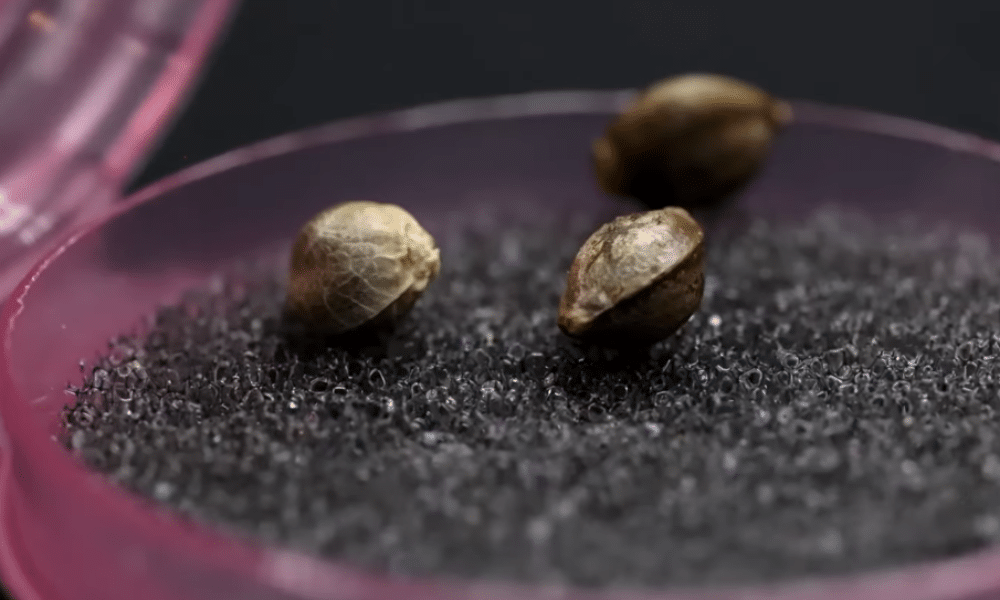
Frequently asked questions
How long does it take for a female marijuana plant to produce seeds through parthenogenesis?
With parthenogenesis, it typically takes 4–6 weeks for seeds to develop after a plant has undergone stress or genetic manipulation. However, this process is rare and not reliable for consistent seed production.
Is parthenogenesis a common occurrence in marijuana plants?
Parthenogenesis is a rare occurrence in marijuana plants. It’s caused by genetic mutations and environmental stressors and can result in fewer viable seeds.
Can seeds produced through parthenogenesis be used for breeding new strains of marijuana?
Seeds produced through parthenogenesis can be used for breeding new strains of marijuana. However, the resulting offspring will only have genetic traits from the female parent, limiting the potential for variation and diversity in the new strain.
Are there any differences in the quality or potency of seeds produced through parthenogenesis compared to those produced through fertilization?
You may believe that seeds produced through parthenogenesis are inferior, but in reality, they can be just as potent and high quality as those produced through fertilization. However, it’s important to note that parthenogenesis isn’t a common occurrence in cannabis plants.
Can environmental factors such as temperature or light affect the likelihood of parthenogenesis in a female marijuana plant?
You can increase the likelihood of parthenogenesis in a female marijuana plant by manipulating environmental factors such as temperature and light. This process may result in the production of viable seeds without male fertilization.
Conclusion
Congratulations! You now know that female marijuana plants can indeed produce seeds without a male. Understanding the process of parthenogenesis and its triggers, as well as the limitations and risks involved, is crucial in ensuring successful seed production.
Think of it like baking a cake. Similar to how you need certain ingredients and conditions to make a delicious cake, you also need specific factors for parthenogenesis to occur.
And, just like how adding too much sugar or not following the recipe can ruin your cake, neglecting certain aspects of parthenogenesis can lead to unsuccessful seed production. This process is rare, and may not offer the best results. There are alternatives, like crossbreeding.
Keep in mind the importance of proper care and attention when utilizing parthenogenesis in your marijuana cultivation. With the right knowledge and techniques, you could successfully produce high-quality seeds without relying on male plants.
Happy growing!


